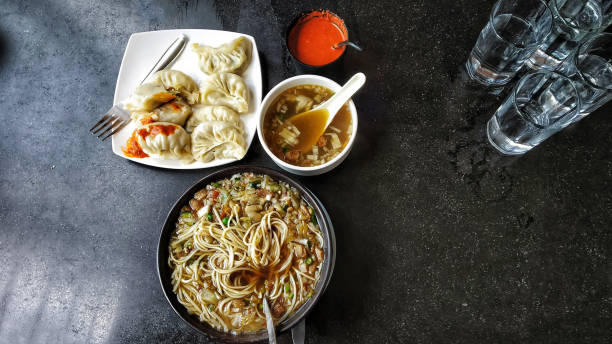Discovering the Hidden Delights of Tibetan Cuisine
Tibet, a region known for its rich culture and captivating landscapes, is also home to a unique and flavorful cuisine. Tibetan food is an understated gem in the world of gastronomy. This article uncovers the exciting culinary offerings of Tibet, the influences shaping its food culture, and the innovative ways it can be incorporated into your food repertoire.

An Introduction to Tibetan Cuisine
Tibetan cuisine is a heartwarming blend of flavors, shaped by the region’s harsh climate and high altitude. Its staples include barley, meat, and dairy products. The food is hearty and comforting, providing the necessary energy to survive the cold Himalayan winters. But Tibetan food is not just about practicality; it’s also about the joy of sharing meals and the communal spirit that permeates Tibetan society.
The Core Elements of Tibetan Dishes
The foundation of most Tibetan dishes lies in Tsampa (roasted barley flour) and Yak meat. Tsampa is a versatile ingredient used to make everything from breads to beverages. Yak meat, tender and flavorful, is a major protein source. It is used in stews, dumplings and even dried as jerky. Yak butter is a key component in Tibetan tea, a salty, creamy concoction that is an acquired taste for many.
The Charm of Tibetan Street Food
Tibetan street food is a delightful culinary experience. Momos, steamed dumplings stuffed with meat or vegetables, are a popular snack. Then there’s Laping, a spicy mung bean noodle dish, and Shapale, deep-fried meat pies. Each of these dishes are characterized by robust flavors and simple, wholesome ingredients.
Incorporating Tibetan Flavors into Your Kitchen
You don’t need to travel to Tibet to experience its cuisine. Incorporating Tibetan flavors into your kitchen is as straightforward as learning a few key recipes. Start with the basics like Tsampa porridge or Tibetan butter tea. These dishes, while simple, offer a genuine taste of Tibet. Once you master these, you can move onto more complex dishes like Thukpa (Tibetan noodle soup) or Yak curry.
The Future of Tibetan Cuisine
As the world becomes more interconnected, Tibetan cuisine is slowly gaining recognition. Chefs are exploring the potential of Tibetan ingredients, creating innovative dishes that maintain the essence of Tibetan flavors while introducing them to a broader audience. This fusion of tradition and innovation is paving the way for the future of Tibetan cuisine.
- Tibetan barley wine, known as Chang, is a popular local beverage.
- Yak cheese is rich in protein and has a unique, tangy flavor.
- The Tibetan hot pot is an interactive dining experience, where diners cook their own meat and vegetables in a communal pot.
Tibetan food is more than just sustenance; it is a window into the region’s history, culture, and lifestyle. It’s a cuisine shaped by necessity and scarcity but enriched by communal values and a distinct sense of identity. As we continue to explore and appreciate diverse food cultures, Tibetan cuisine deserves a spot on every food lover’s list. Its unique flavors, wholesome ingredients, and the stories behind each dish serve as a reminder of the vast culinary landscape waiting to be discovered. So, the next time you’re looking for a culinary adventure, consider the highlands of Tibet. Your taste buds will thank you.




